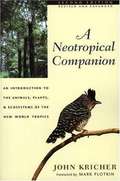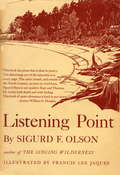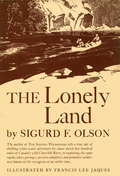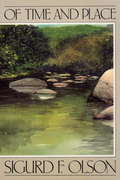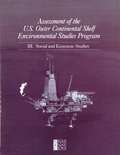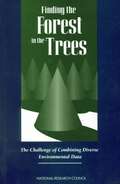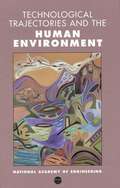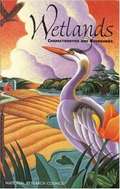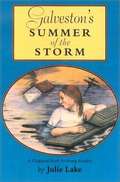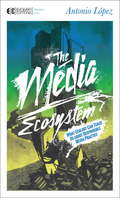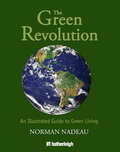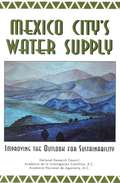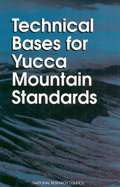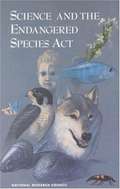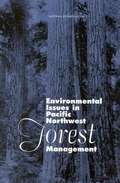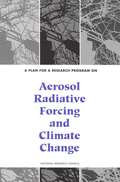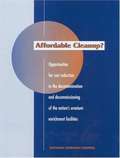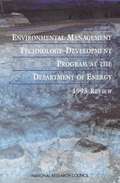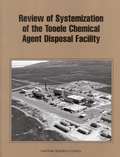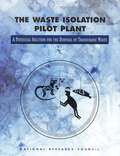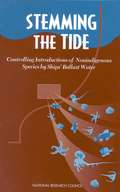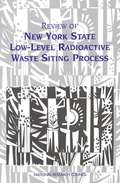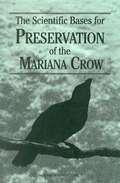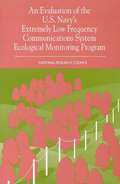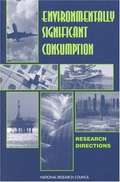- Table View
- List View
A Neotropical Companion: An Introduction to the Animals, Plants, and Ecosystems of the New World Tropics (2nd Edition, Revised and Expanded)
by John KricherA Neotropical Companion is an extraordinarily readable introduction to the American tropics, the lands of Central and South America, their remarkable rainforests and other ecosystems, and the creatures that live there. It is the most comprehensive one-volume guide to the Neotropics available today. Widely praised in its first edition, it remains a book of unparalleled value to tourists, students, and scientists alike. This second edition has been substantially revised and expanded to incorporate the abundance of new scientific information that has been produced since it was first published in 1989. Major additions have been made to every chapter, and new chapters have been added on Neotropical ecosystems, human ecology, and the effects of deforestation. Biodiversity and its preservation are discussed throughout the book, and Neotropical evolution is described in detail. This new edition offers all new drawings and photographs, many of them in color. As enthusiastic readers of the first edition will attest, this is a charming book. Wearing his learning lightly and writing with ease and humor, John Kricher presents the complexities of tropical ecology as accessible and nonintimidating. Kricher is so thoroughly knowledgeable and the book is so complete in its coverage that general readers and ecotourists will not need any other book to help them identify and understand the plants and animals, from birds to bugs, that they will encounter in their travels to the New World tropics. At the same time, it will fascinate armchair travelers and students who may get no closer to the Neotropics than this engagingly written book.
Listening Point
by Sigurd F OlsonListening Point is about the spiritual human connection to the environment. "Each time I have gone there I have found something new which has opened up great realms of thought and interest", Sigurd F. Olson writes. "For me it has been a point of discovery and, like all such places of departure, has assumed meaning far beyond the ordinary". Considered by some to contain Olson's most vivid and moving passages, Listening Point is the nature lover's companion for hearing the depth and beauty of the great outdoors.
Lonely Land
by Sigurd F. OlsonThe Lonely Land is a tribute to the unspoiled beauty of the deep wilderness and the rugged individuals past and present who take up a canoe paddle to explore it.
Of Time and Place
by Sigurd F. OlsonOf Time and Place is a legacy from one of the best-loved nature writers of our time. In this, his last book, completed just before his death, Sigurd F. Olson guides readers through his wide-ranging memories of a lifetime dedicated to the preservation of the wilderness. Like his other best-selling books, Of Time and Place is filled with beauty, adventure, and wonder. Olson recalls his many friendships of trail and woods and portage, his favorite campsites, the stories behind the artifacts and mementos hanging in his cabin at Listening Point. Whether he is remembering canoe trips with his friends, admiring the playful grace of the otter, or pondering the Earth's great cycles of climatic change, these moving and evocative essays reaffirm Olson's stature as one of the greatest nature writers of this century.
Assessment of the U.S. Outer Continental Shelf Environmental Studies Program: III. Social and Economic Studies
by Socioeconomics PanelThis is the third of four volumes from the Committee to Review the Outer Continental Shelf (OCS) Environmental Studies Program (ESP). The first two dealt with physical, oceanographic, and ecological aspects of the program.This book presents the findings of the panel's investigation of the social and economic relevance of OCS oil and gas activities and the social and economic aspects of the ESP.It describes the potential effects of OCS activities on the human environment, presents an ideal socioeconomic studies program, and comments on the current program in the Atlantic, Gulf of Mexico, Pacific, and Alaska regions.
Finding the Forest in the Trees: The Challenge of Combining Diverse Environmental Data
by Committee for a Pilot Study on Database InterfacesDuring the last few decades of the 20th century, the development of an array of technologies has made it possible to observe the Earth, collect large quantities of data related to components and processes of the Earth system, and store, analyze, and retrieve these data at will. Over the past ten years, in particular, the observational, computational, and communications technologies have enabled the scientific community to undertake a broad range of interdisciplinary environmental research and assessment programs. Sound practice in database management are required to deal with the problems of complexity in such programs and a great deal of attention and resources has been devoted to this area in recent years. However, little guidance has been provided on overcoming the barriers frequently encountered in the interfacing of disparate data sets. This book attempts to remedy that problem by providing analytical and functional guidelines to help researchers and technicians to better plan and implement their supporting data management activities.
Technological Trajectories and the Human Environment
by Jesse H. Ausubel H. Dale LangfordTechnological Trajectories and the Human Environment provides a surprising projection of a much greener planet, based on long-range analysis of trends in the efficient use of energy, materials, and land.The authors argue that we will decarbonize the global energy system and drastically reduce greenhouse gas emissions. We will dematerialize the economy by leaner manufacturing, better product design, and smart use of materials. We will significantly increase land areas reserved for nature by conducting highly productive and environmentally friendly agriculture on less land than is used today, even as global population doubles.The book concludes that the technological opportunities before us offer the possibility of a vastly superior industrial ecology. Rich in both data and theory, the book offers fresh analyses essential for everyone in the environmental arena concerned with global change, sustainable development, and profitable investments in technology.
Wetlands: CHARACTERISTICS AND BOUNDARIES
by Committee on Characterization of WetlandsWetlands has become a hot word in the current environmental debate. But what does it signify? In 1991, proposed changes in the legal definities of wetlands stirred controversy and focused attention on the scientific and economic aspects of their management.This volume explores how to define wetlands. The committee--whose members were drawn from academia, government, business, and the environmental community--builds a rational, scientific basis for delineating wetlands in the landscape and offers recommendations for further action.Wetlands also discusses the diverse hydrological and ecological functions of wetlands, and makes recommendations concerning so-called controversial areas such as permafrost wetlands, riparian ecosystems, irregularly flooded sites, and agricultural wetlands. It presents criteria for identifying wetlands and explores the problems of applying those criteria when there are seasonal changes in water levels.This comprehensive and practical volume will be of interest to environmental scientists and advocates, hydrologists, policymakers, regulators, faculty, researchers, and students of environmental studies.
Galveston's Summer of the Storm
by Julie LakeA fourteen-year-old girl from Austin spends the summer of 1900 at her grandmother's home in Galveston and is caught in the Great Hurricane of September 8, 1900.
The Media Ecosystem
by Antonio LopezIn The Media Ecosystem, Antonio Lopez draws together the seemingly disparate realms of ecology and media studies to present a fresh and provocative interpretation of the current state of the mass media--and its potential future. Lopez explores the connections between media and the environment, arguing that just as the world's powers have seized and exploited the physical territories and natural resources of the earth, so, too, have they colonized the "cultural commons"--the space of ideas that everyone shares. He identifies the root of the problem in the privileging of "mechanistic" thinking over ecological intelligence, which recognizes that people live in a relationship with every other living thing on the planet. In order to create a more sustainable media ecosystem--just like the preservation of organic ecosystems--we must reconnect our daily media activities to their impact on others and the environment. To become "organic media practitioners," we must become aware of the impact of media use on the environment; recognize media's influence on our perception of time, space, and place; understand media's interdependence with the global economy; be conscious of media's interaction with cultural beliefs; and develop an ethical framework in order to act upon these understandings. Above all, Lopez calls for media producers and consumers alike to bring a sense of ritual and collaboration back to the process of communication, utilizing collective intelligence and supporting a new culture of participation. Containing both wide-reaching analysis and practical tips for more conscious media use, The Media Ecosystem is designed for all those who seek a more sustainable future.From the Trade Paperback edition.ent. Be aware of the environments that engage your attention. What do these environments (be they computer interfaces, shopping malls, churches, or forests) demand of your awareness? What possibilities or restrictions do they afford? · Know your gadget. Our media gadgets are part of vast networks of material extraction, production, and waste. Disengage those systems of power that are enabling environmental destruction and injustice. · Know your connectivity. Every screen is a portal. Such portals are nodes into vast possibilities of experience. Enter into these spaces with eyes wide open and feet on the ground. You are the medium for the planet's spirit. Channel wisely.
The Green Revolution
by Norman NadeauEver Wonder What A Green Renewable Sustainable World Would Look Like?With the state of our world and its limited resources, more and more people are trying to lead a greener lifestyle in order to do their part. The Green Revolution provides comprehensive information associated with adopting daily practices that will ultimately sustain, not deplete, precious natural materials in an ever-growing population.Renewable energy expert Norman Nadeau leads by example as he details how he has committed his life to living green. From the application of solar and wind turbine technology, to recovering energy embedded in places one may not expect (such as animals' manure), The Green Revolution highlights the highly sustainable system Norman Nadeau developed for his family farm.The Green Revolution serves as a broad introduction for those who want to conserve rather than squander. At this very important turning point in our planet's history, this book offers the principles by which anyone can live in the most sustainable way possible.
Mexico City's Water Supply: Improving the Outlook for Sustainability
by The Joint Academies Committee on the Mexico City Water SupplyThis book addresses the technical, health, regulatory, and social aspects of ground water withdrawals, water use, and water quality in the metropolitan area of Mexico City, and makes recommendations to improve the balance of water supply, water demand, and water conservation. The study came about through a nongovernmental partnership between the U.S. National Academy of Sciences National Research Council and the Mexican Academies of Science and Engineering. The book will contain a Spanish-language translation of the complete English text.
Technical Bases for Yucca Mountain Standards
by Committee on Technical Bases for Yucca Mountain StandardsThe United States currently has no place to dispose of the high-level radioactive waste resulting from the production of the nuclear weapons and the operation of nuclear electronic power plants. The only option under formal consideration at this time is to place the waste in an underground geologic repository at Yucca Mountain in Nevada. However, there is strong public debate about whether such a repository could protect humans from the radioactive waste that will be dangerous for many thousands of years. This book shows the extent to which our scientific knowledge can guide the federal government in developing a standard to protect the health of the public from wastes in such a repository at Yucca Mountain. The U.S. Environmental Protection Agency is required to use the recommendations presented in this book as it develops its standard.
Science and the Endangered Species Act
by Committee on Scientific Issues in the Endangered Species ActThe Endangered Species Act (ESA) is a far-reaching law that has sparked intense controversies over the use of public lands, the rights of property owners, and economic versus environmental benefits.In this volume a distinguished committee focuses on the science underlying the ESA and offers recommendations for making the act more effective.The committee provides an overview of what scientists know about extinction--and what this understanding means to implementation of the ESA. Habitat--its destruction, conservation, and fundamental importance to the ESA--is explored in detail.The book analyzes Concepts of species--how the term "species" arose and how it has been interpreted for purposes of the ESA. Conflicts between species when individual species are identified for protection, including several case studies. Assessment of extinction risk and decisions under the ESA--how these decisions can be made more effectively. The book concludes with a look beyond the Endangered Species Act and suggests additional means of biological conservation and ways to reduce conflicts. It will be useful to policymakers, regulators, scientists, natural-resource managers, industry and environmental organizations, and those interested in biological conservation.
Environmental Issues In Pacific Northwest Forest Management
by National Research CouncilPeople are demanding more of the goods, services, and amenities provided by the forests of the Pacific Northwest, but the finiteness of the supply has become clear. This issue involves complex questions of biology, economics, social values, community life, and federal intervention.Forests of the Pacific Northwest explains that economic and aesthetic benefits can be sustained through new approaches to management, proposes general goals for forest management, and discusses strategies for achieving them. Recommendations address restoration of damaged areas, management for multiple uses, dispute resolution, and federal authority.The volume explores the market role of Pacific Northwest wood products and looks at the implications if other regions should be expected to make up for reduced timber harvests.The book also reviews the health of the forested ecosystems of the region, evaluating the effects of past forest use patterns and management practices. It discusses the biological importance, social significance, and management of old-growth as well as late-succession forests.This volume will be of interest to public officials, policymakers, the forest products industry, environmental advocates, researchers, and concerned residents.
A Plan for a Research Program on Aerosol Radiative Forcing and Climate Change
by National Research Council StaffThis book recommends the initiation of an "integrated" research program to study the role of aerosols in the predicted global climate change. Current understanding suggest that, even now, aerosols, primarily from anthropogenic sources, may be reducing the rate of warming caused by greenhouse gas emissions. In addition to specific research recommendations, this book forcefully argues for two kinds of research program integration: integration of the individual laboratory, field, and theoretical research activities and an integrated management structure that involves all of the concerned federal agencies.
Affordable Cleanup?: Opportunities for cost reduction in the decontamination and decommissioning of the nation's uranium enrichment facilities
by Committee on Decontamination Decommissioning of Uranium Enrichment FacilitiesThe Energy Policy Act of 1992 called on the National Academy of Sciences to conduct a study and provide recommendations for reducing the costs of decontaminating and decommissioning (D&D) the nation's uranium enrichment facilities located at Oak Ridge, Tennessee; Raducah, Kentucky; and Portsmouth, Ohio. This volume examines the existing plans and cost estimates for the D&D of these facilities, including such elements as technologies, planning and management, and identifies approaches that could reduce D&D costs. It also assesses options for disposition of the large quantities of depleted uranium hexafluoride that are stored at these sites.
Environmental Management Technology-Development Program at the Department of Energy 1995 Review
by Committee on Environmental Management TechnologiesThis book provides the National Academy of Sciences' 1995 review of the technology development program for the remediation of the Department of Energy's weapons complex facilities. It makes scientific, technical, and programmatic recommendations to strengthen technology development within DOE and ensure that it meet its goals of cost effectiveness, safety, and decreased risk. The recommendations address DOE's five focus areas: landfill stabilization; contaminant plume containment and remediation; facility transitioning, decommissioning, and final disposition; mixed waste characterization treatment; and high-level waste in tanks. The book also addresses technologies in areas that cross cut the above focus area programs, namely characterization monitoring and sensor technologies, efficient separations and processing, robotics, and waste disposal.
Review of Systemization of the Tooele Chemical Agent Disposal Facility
by Committee on Review Evaluation of the Army Chemical Stockpile Disposal ProgramIn 1993, at Tooele Army Depot, Utah, the Army completed construction of the Tooele Chemical Agent Disposal Facility (TOCDF), the first complete facility for destruction of lethal unitary chemical agents and munitions to be built in the continental United States. The TOCDF will employ the Army's baseline incineration system to destroy the depot's increment of the nation's aging unitary chemical stockpile. This book assesses Army changes and improvements to the TOCDF in response to recommendations contained in earlier reports of the committee. It assesses aspects of the facility's readiness for safe agent handling and destruction operations, its agent monitoring system, and its site specific risk assessment.
The Waste Isolation Pilot Plant: A Potential Solution for the Disposal of Transuranic Waste
by Committee on the Waste Isolation Pilot PlantThis volume discusses the readiness of the U.S. Department of Energy's (DOE) Waste Isolation Pilot Plant (WIPP) facility near Carlsbad, New Mexico, to serve as a geological repository for transuranic radioactive waste. WIPP is located in a Permian-age bedded salt deposit 658 meters below the surface. The committee has long reviewed DOE's readiness efforts, now aimed at demonstrating compliance with U.S. Environmental Protection Agency regulations. Site characterization studies and performance assessment modeling are among the topics considered in this volume.
Stemming the Tide: Controlling Introductions of Nonindigenous Species by Ships' Ballast Water
by Committee on Ships' Ballast OperationsThe European zebra mussel in the Great Lakes, a toxic Japanese dinoflagellate transferred to Australia--such biologically and economically harmful stowaways have made it imperative to achieve better management of ballast water in ocean-going vessels.Stemming the Tide examines the introduction of nonindigenous species through ballast water discharge. Ballast is any solid or liquid that is taken aboard ship to achieve more controlled and safer operation. This expert volume Assesses current national and international approaches to the problem and makes recommendations for U.S. government agencies, the U.S. maritime industry, and the member states of the International Maritime Organization. Appraises technologies for controlling the transfer of organisms--biocides, filtration, heat treatment, and others --with a view toward developing the most promising methods for shipboard demonstration. Evaluates methods for monitoring the effectiveness of ballast water management in removing unwanted organisms. The book addresses the constraints inherent in ballast water management, notably shipboard ballast treatment and monitoring. Also, the committee outlines efforts to set an acceptable level of risk for species introduction using the techniques of risk analysis. Stemming the Tide will be important to all stakeholders in the issue of unwanted species introduction through ballast discharge: policymakers, port authorities, shippers, ship operators, suppliers to the maritime industry, marine biologists, marine engineers, and environmentalists.
Review of New York State Low-Level Radioactive Waste Siting Process
by Committee to Review New York State's Siting Methodology Selection for Low-Level Radioactive Waste DisposalThis book reviews the efforts of New York state to site a low-level radioactive waste disposal facility. It evaluates the nature, sources, and quality of the data, analyses, and procedures used by the New York State Siting Commission in its decisionmaking process, which identified five potential sites for low-level waste disposal. Finally, the committee offers a chapter highlighting the lessons in siting low-level radioactive waste facilities that can be learned from New York State's experience.
The Scientific Bases for Preservation of the Mariana Crow
by Committee on the Scientific Bases for the Preservation of the Mariana CrowThis book, while focusing on current preservation challenges posed by the Aga, or Mariana crow, also reflects the larger issues and challenges of biodiversity conservation in all oceanic island ecosystems. It evaluates causes for the continuing decline of the Aga, which exists on only the two southernmost islands in the Mariana archipelago, Guam and Rota, and reviews actions to halt or reverse the decrease.This book reminds us of the importance and challenge of preserving the unique environmental heritage of islands of the Mariana archipelago, the need for increased knowledge to restore and maintain native species and habitats, and the compelling and lasting value of extensive public education to stimulate environmentally informed public policy development.
An Evaluation of the U.S. Navy's Extremely Low Frequency Communications System Ecological Monitoring Program
by Committee to Evaluate the U.S. Navy's Extremely Low Frequency Communications System Ecological Monitoring ProgramThe U.S. Navy established an ecological monitoring program to determine whether electric and magnetic fields from extremely low frequency (ELF) communications systems influenced plant and animal populations near the transmitting facilities. Although some of the researchers believe that a few biological changes might have occurred, they concluded that the results do not indicate significant adverse ecological effects.This book evaluates the 11 ecological studies of the Navy's monitoring program and examines the adequacy of experimental design, the data collection and analysis, and the soundness of the conclusions. It also addresses whether the monitoring program was capable of detecting subtle effects due to ELF exposure and examines the biological changes observed by some program researchers, such as enhanced tree growth.
Environmentally Significant Consumption: Research Directions
by Committee on the Human Dimensions of Global ChangeThere has been much polemic about affluence, consumption, and the global environment. For some observers, "consumption" is at the root of global environmental threats: wealthy individuals and societies use far too much of the earth's resource base and should scale back their appetites to preserve the environment for future generations and allow a decent life for the rest of the world. Other observers see affluence as the way to escape environmental threats: economic development increases public pressure for environmental protection and makes capital available for environmentally benign technologies. The arguments are fed by conflicting beliefs, values, hopes, and fears--but surprisingly little scientific analysis.This book demonstrates that the relationship of consumption to the environment needs careful analysis by environmental and social scientists and conveys some of the excitement of treating the issue scientifically. It poses the key empirical questions: Which kinds of consumption are environmentally significant? Which actors are responsible for that consumption? What forces cause or explain environmentally significant consumption? How can it be changed? The book presents studies that open up important issues for empirical study: Are there any signs of saturation in the demand for travel in wealthy countries? What is the relationship between environmental consumption and human well-being? To what extent do people in developing countries emulate American consumption styles? The book also suggests broad strategies that scientists and research sponsors can use to better inform future debates about the environment, development, and consumption.
